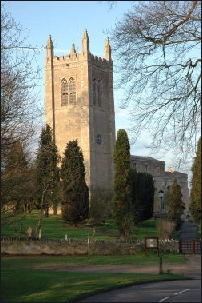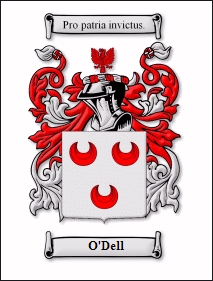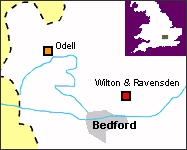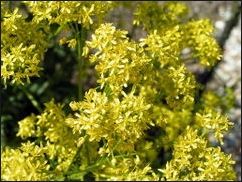Odell Today
The village now known as Odell lies to the north of the county town of Bedford, near the villages of Harrold, Pavenham, Milton Ernest and Turvey. The following is a brief account of the local history.
ROMAN AND SAXON PERIOD
Evidence of occupation includes the remains of a farm dating from just before the Roman Conquest. It comprised two round timber buildings inside a fenced enclosure, and two cremation pits. After the conquest its survival and prosperity may have been linked to the existence of a Roman presence at Irchester.
The evidence is that the farm was abandoned in the 4th C. and remained unoccupied until the 6/7th C. After this it no doubt experienced a chequered history owing to attacks in the area by Danish vikings.
In the early 11th C. the area where the present village lies was part of five or more "hides" that were under Levenot, a thane of King Edward the Confessor, who owned much land.
At that time the village was already known by the name of Wadelle, or Wadehelle. This name means "the hill where woad grows". Woad (Isatis tinctoria) was important as a source of a blue dye. (Julius Caesar had reported that he had found the Ancient Britons stained themselves with it!)
http://www.odells.info/ode_beds.html
The name group ODELL includes many similar sounding names, including:
According to different experts, these derive from one or more of the following:
The Old English words for "woad" (wad) and "hill" (hul);
A shortened form of the phrase "Of the dell" (Old English word = doel, Old Norse = dalr)
The Old English words for "wood" and "hill";
The Old Scandinavian word odal/odel/wodal/uodil/edhel, meaning land held in absolute ownership;
The Old Norse word Ódæll meaning overbearing;
Odo, King William the Conqueror's half brother; and
The Irish name "O'Donnel"
Most people (including the ODELL International Registry) favour the first option. They link the name to the 11th C. place called Odell in the north of the county of Bedfordshire in England.
Certainly since the 16th C. there has been a very high density of ODELLs in Bedfordshire and Northamptonshire, e.g. around Cranfield. However it is not safe to assume that all ODELLs link to this village.
http://www.odells.info/ode_name.html
Sometimes ODELLs become famous! (At the moment this list is limited to posthumous tributes)
Allan Odell - A tribute to the originator of the Burma-Shave shave signs, the inspirational messages that flanked many US highways before the 2WW.
Benjamin Baker Odell Jr. - Short official note about this congressman and twice-elected governor of New York who (rumour has it) nearly became vice-president. (d. 1926)
George Washington Odell, John Henry Odell and Caleb Sherwood Odell - A story of three organ enthusiasts and the business they founded. (Caleb d. 1944, William d.1979)
Jack Odell - A small piece about the last surviving passenger of the Titanic. (d. 1995)
Jonathan Odell (Rev Dr.) - Note about this minister, author and spy, who became the first provincial secretary of New Brunswick, Canada (d. 1818) and is the Odell behind Odell park in Fredericton.
Noel Odell - The geologist and mountain climber who was on Everest with Mallory and Irving and produced an account of their last moments. (d. ?)
Scott O'Dell - Just one of many pages about this author who received the Newbery Medal, the Hans Christian Anderson Award for lifetime achievement, and gave his own name to a new award.
http://www.odells.info/ode_fame.html
O'Dell Coat of Arms
and Name History
Spelling variations of this family name include Odell, O'Dell, Odehull, Wodehull, Wodhull and others.
First found in Bedfordshire where they were seated from early times and their first records appeared on the early census rolls taken by the early kings of Britain to determine the rate of taxation of their subjects.
Families began migrating abroad in enormous numbers because of the political and religious discintent in
England. Often faced with persecurtion and starvation in England, the possibilities of the New World attracted many English people. Although the ocean trip took many lives, those who did get to North America were instrumental in bulding the initial groundwork for what would become new powerful nations.
Some of the first immigrants to cross the Atlantic and come to North America bore the name O'Dell, or a variant listed above: William Odell settled in New England in 1630, Henry Odell settled in Virginia in 1654; Elizabeth Odell and her husband settled in Boston in 1820.
Motto translated: For my unconquered country.
http://www.houseofnames.com/xq/asp.c/qx/o_dell-coat-arms.html
ODELL Family History
As you trace back your ODELL family history you are likely to find yourself converging on the area of northern Bedfordshire, southern Northamptonshire, eastern Buckinghamshire or north-eastern Oxfordshire. This
During the 1970s, several gravel pits between Odell and nearby Harrold were flooded with water from the nearby Great Ouse, and the area turned into Harrold-Odell Country Park, popular with dog-walkers and bird spotters. A wide variety of native waterfowl and other birds are seen on or near the lakes, including Great Crested Grebes, moorhens, herons, swans, cormorants and a wide variety of ducks, as well as aquatic insects such as damselflies and dragonflies.
http://en.wikipedia.org/
wiki/Odell,_Bedfordshire
Over recent years All Saints has become a place visited by those people round the world who seek to trace their ancestry to Odell, and to spend some time in the church or churchyard. Many of these visits are recorded in the church’s visitors' book.
While there is still a hill at Odell (with an attractive wood on it), there is little woad to be found; the plant is not as common in England as it once was. Commercially produced indigo has replaced woad as a dye (although seeds of woad can still be obtained.
Odell Castle is a Norman earthwork motte and bailey fortress, founded by Walter de Wahul, count of Flanders. Sadly nothing is known for certain, about the history and the
http://www.castleuk.net/castle_lists_midlands/153/odellcastle.htm
layout of its later fortifications. The castle, with its stone keep was in ruins by the 16th century and later building has obliterated part of the motte and most of the masonry.
Odell Castle is located in the village centre, off High Street. 9 miles north-west of Bedford, on the A6-local roads. The site is visible from the road. Car parking is by the side of the road, at the church.
Odell
O'Dell
W)odle
Wo(o)d(d)ell
Wood(h)all
(Wo)od(h)ill
Waddle
Waddell
Hoddle
Ódæll
Recently, scientists have discovered woad might be used to prevent cancer, having more than 20 times the amount of glucobrassicin contained in broccoli.[4] Young leaves when damaged can produce more glucobrassicin, up to 65 times as much.
Odell - the village of Odell in Bedforshire, England
Geneology - the family history of the Odell clan
Goodie Knapp - the trial of an alleged witch
The Odell Clan
appears to be the historical centre of the ODELL population. Particularly densely populated parishes in the 15th-17th century were: Mollington, Oxfordshire; Cranfield, Bedfordshire; Salford, Beds; and Newport Pagnell, Buckinghamshire, where quite often the name ODELL appears in all the variants almost simultaneously. (This is partly due to differences in pronounciation of the vowels and partly due to this being the first time when many people had their names put in writing and there were no consistent ways of spelling.)
There is an alleged link between ODELL and Wodhull (at Thenford, Northamptonshire) or Wadehull/de Wahul. But for some researchers it still has to be conclusively established.
http://www.odells.info/ode_uk.html






